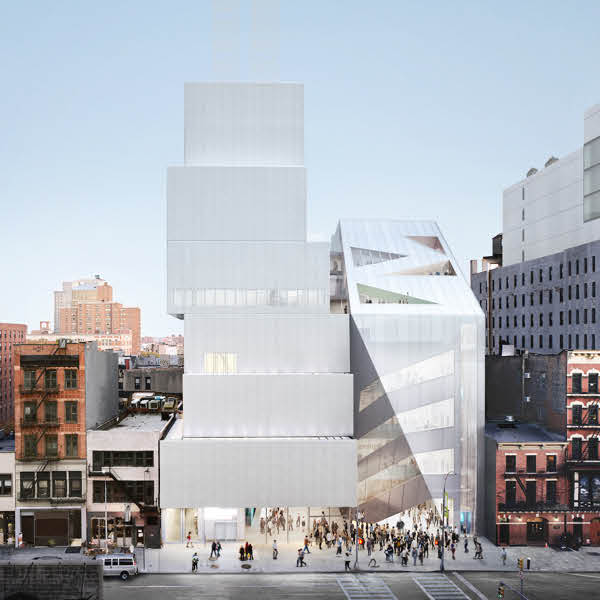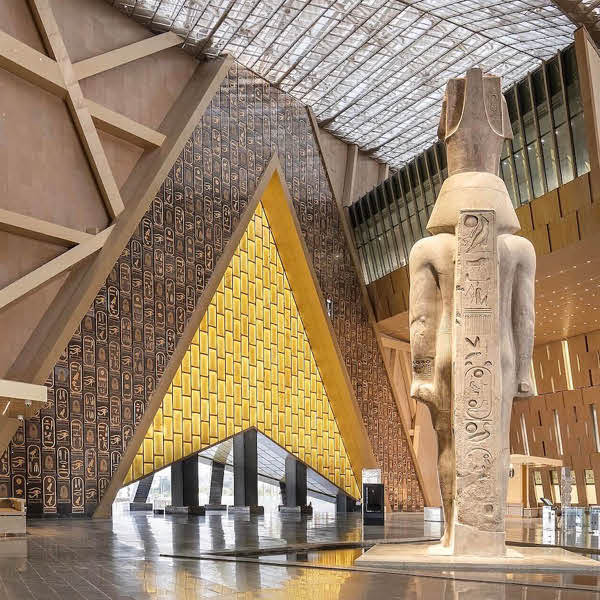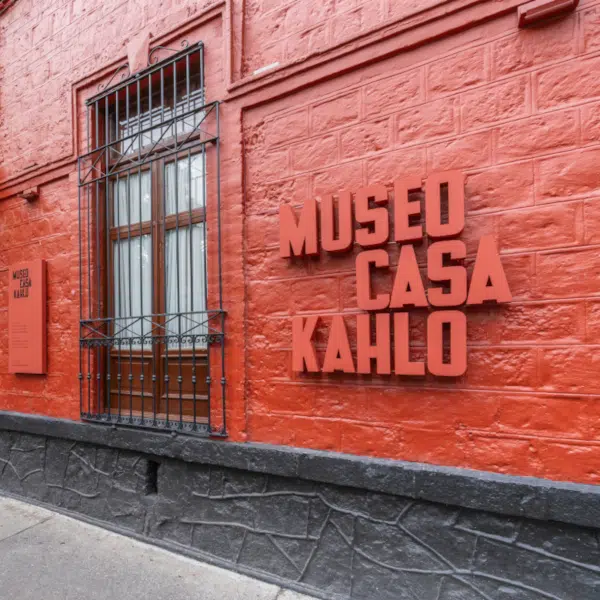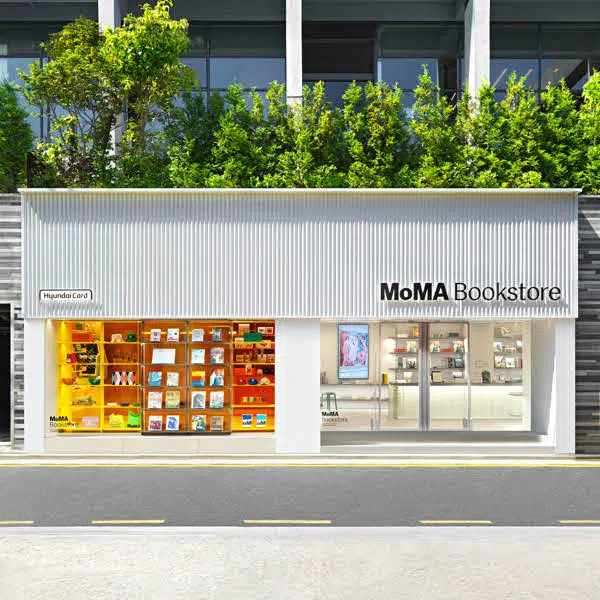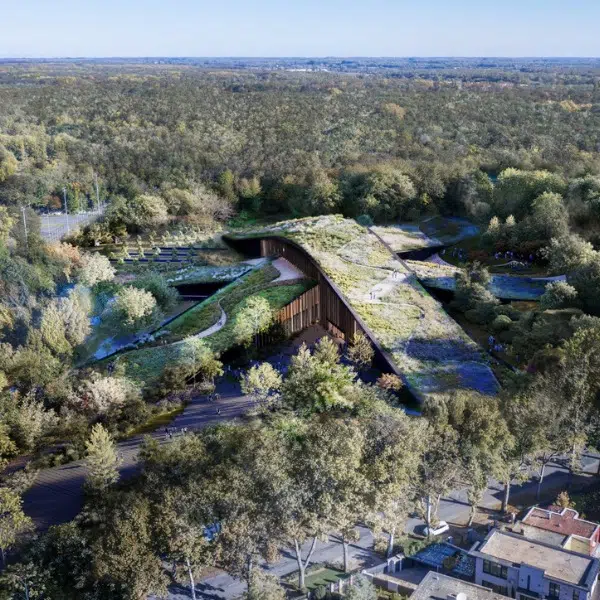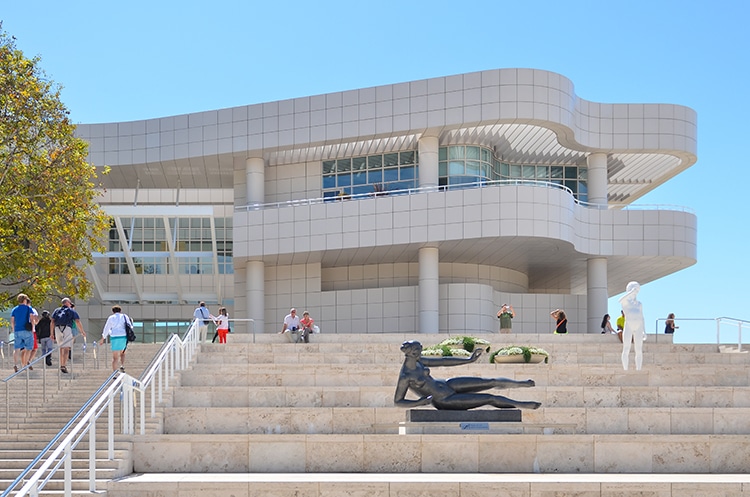
Photo: Stock Photos from ORHAN CAM/Shutterstock
Among the prestigious art collections on United States soil, the J. Paul Getty Museum is a modern masterpiece. Split between two campuses—the Getty Villa and the Getty Center—the collection houses works by Van Gogh, Turner, and countless Old Masters. The Los Angeles museum is also home to thousands of precious antiquities which offer insight into ancient life.
Much like the Guggenheim Museum, the Getty began with the private collection of a billionaire art enthusiast. From the oil magnate J. Paul Getty to the online collections of today, the Getty has evolved into a modern colossus. Read on to learn more about this dazzling west coast museum.
What do you know about the J. Paul Getty Museum? Scroll down to learn more.
The Getty Family, Oil, and Art

The Getty Villa (Photo: Bobak Ha'Eri via Wikimedia Commons [CC BY 3.0])
During the late-19th century Gilded Age in the United States, many tycoons arose in the expanding businesses of banking, railroads, and oil. Among those to make it big were the Getty family. George Getty (born in 1855) was a prominent lawyer who ventured into the oil business with his only son, Jean Paul Getty (born 1892). Known as J. Paul Getty, by 1966 the younger Getty was the richest man in the world due to the success of their company Getty Oil. He began using his fortune to collect art as early as the 1930s. First infatuated with 18th-century French works, Getty was known for bargain-hunting. After amassing an impressive collection of Old Masters, Getty turned his attention to Greek and Roman antiquities later in life.
Getty lived with his art collection in a luxury estate in Malibu, California. In 1954, he began exhibiting his collection to the public through a gallery built on his property. In 1968, Getty announced the construction of a new building to house his collections. The Classical-style structure was designed by Robert E. Langdon, Jr. and Ernest C. Wilson, Jr. It was modeled after the ancient Villa dei Papiri in Italy. This structure would become the perfect venue for Getty's expanding treasure trove of statuary and other ancient artifacts. The Getty Villa today houses the ancient collections.
The Making of a Modern Museum
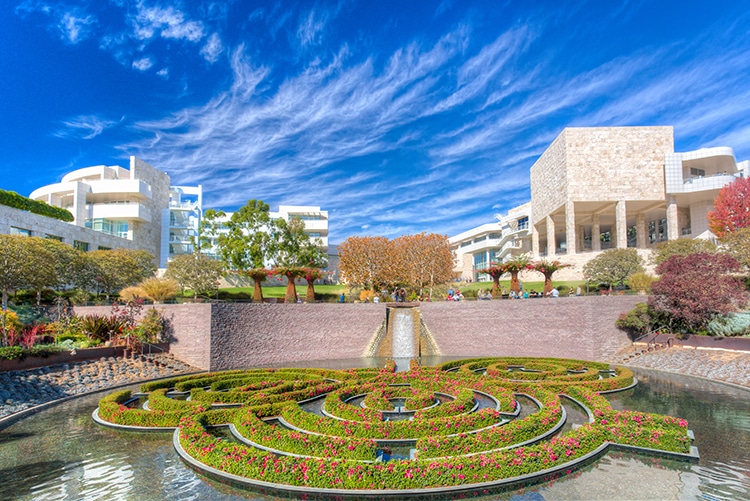
The Getty Center. (Photo: Stock Photos from KEN WOLTER/Shutterstock)
The Getty Villa opened in 1974, but its founder died in 1976 at his home in England, never having visited. Upon Getty's death, his newly established museum inherited a vast fortune. The money was used to expand the collections.
By the 1990s, more space was required to house and display the disparate works—including Impressionist paintings, ancient Greek statues, and Old Master portraits. In 1983, the Getty Trust purchased land in the hills of Brentwood in L.A. The modern building—designed by Richard Meier—took years to design, approve, and build. The structure became known as the Getty Center and it opened to the public in 1997. At this time, renovations began on the Getty Villa. In 2006, the Villa reopened.
With antiquities displayed at the Getty Villa and European art from the medieval period on displayed at the Getty Center, the museum solidified its place as one of the largest and most important cultural institutions on the West coast.
The Getty and the Antiquities Trade

“Modern Rome,” by J.M.W. Turner, 1839. (Photo: Wikimedia Commons [Public domain])
What will you see at the Getty?

“Irises,” by Vincent Van Gogh, 1889. (Photo: Wikimedia Commons [Public domain])
Meanwhile, the Getty Center houses a wide array of European art from medieval manuscripts to Impressionist masterpieces. You will also find early cyanotypes by Anna Atkins and modern images from Mikiko Hara. The museum even boasts an impressive Decorative Arts collection spanning centuries of craftsmanship.
The Future of the Getty

Photo: Stock Photos from ANTON_IVANOV/Shutterstock
Today, the Getty offers not only an impressive visitor experience but master's programs and other learning opportunities for children and adults.
During the COVID-19 pandemic, it had interesting online lectures—including ones on aphrodisiacs in medieval times and Photography as Revolutionary Aesthetic.
Over 100,000 images are available online free to the public, bringing art to the masses wherever they live. Whether it is through the creative public participation in the Getty Museum Challenge, or the continual curation of modern photography, the Getty Museum continues to enchant millions of visitors each year.
Related Articles:
Guggenheim Museum: How Frank Lloyd Wright Brought His Masterpiece to Life in New York
Art Museums Are Creating 3D Versions of Paintings for Visually Impaired People To Touch
The Rijksmuseum Has Made 709,000 Artworks Available for Free Online
Corning Museum of Glass: Explore the World of Glassmaking at This Museum














































































